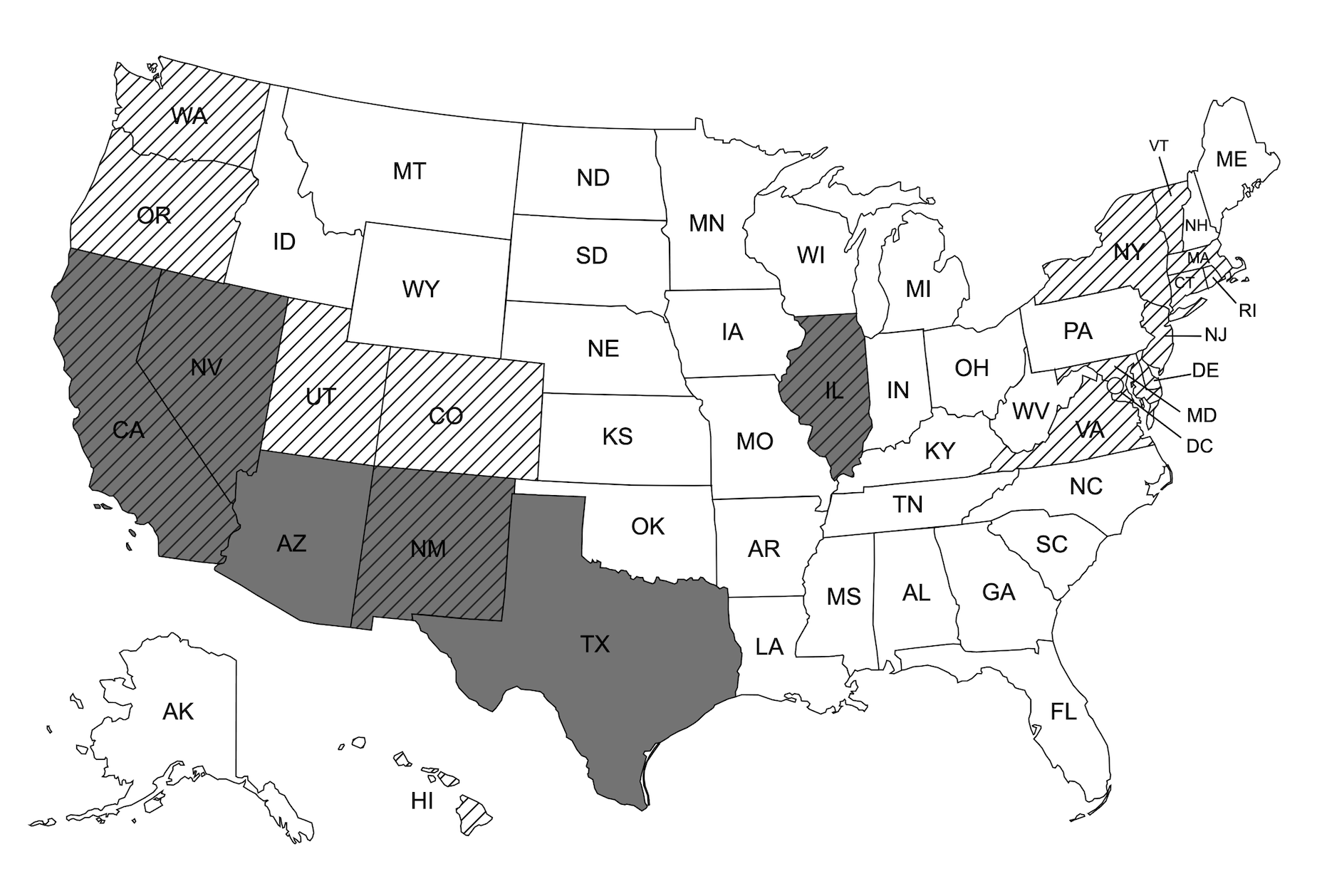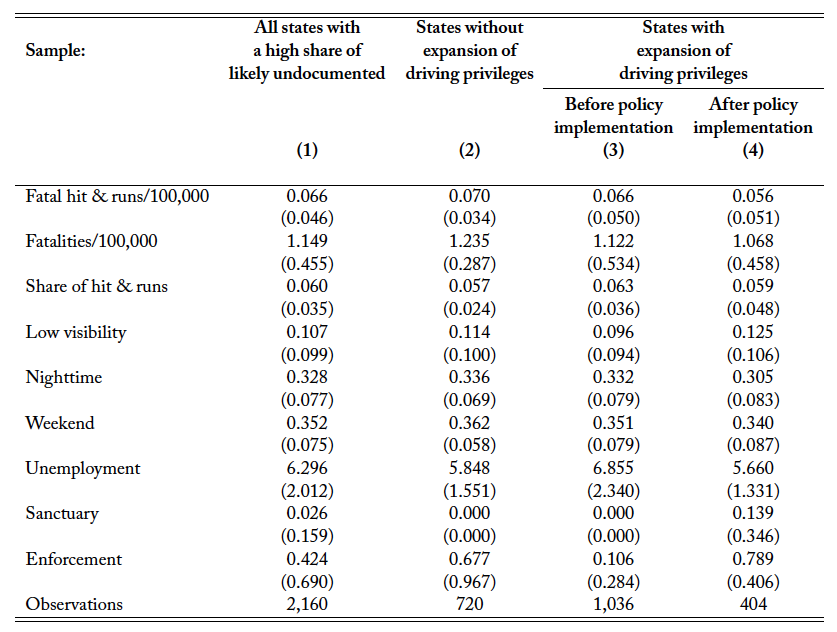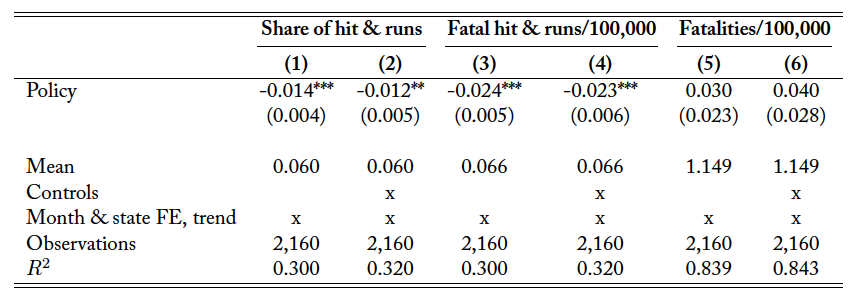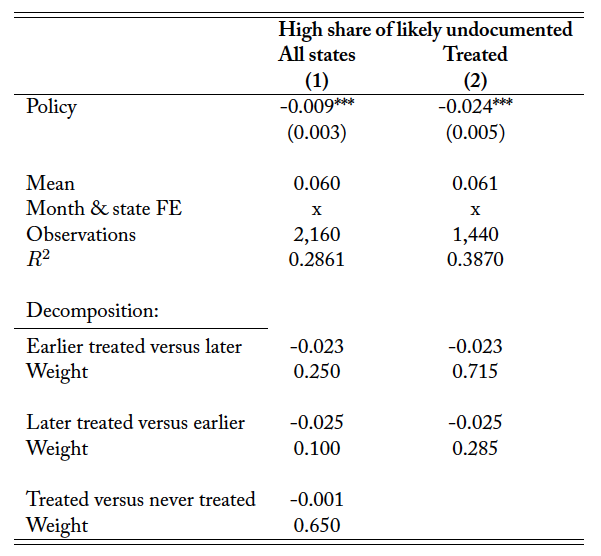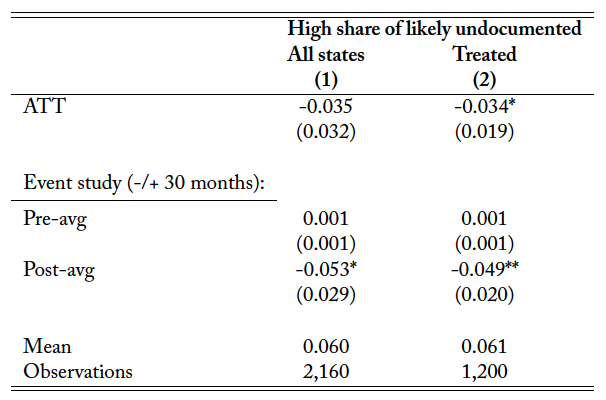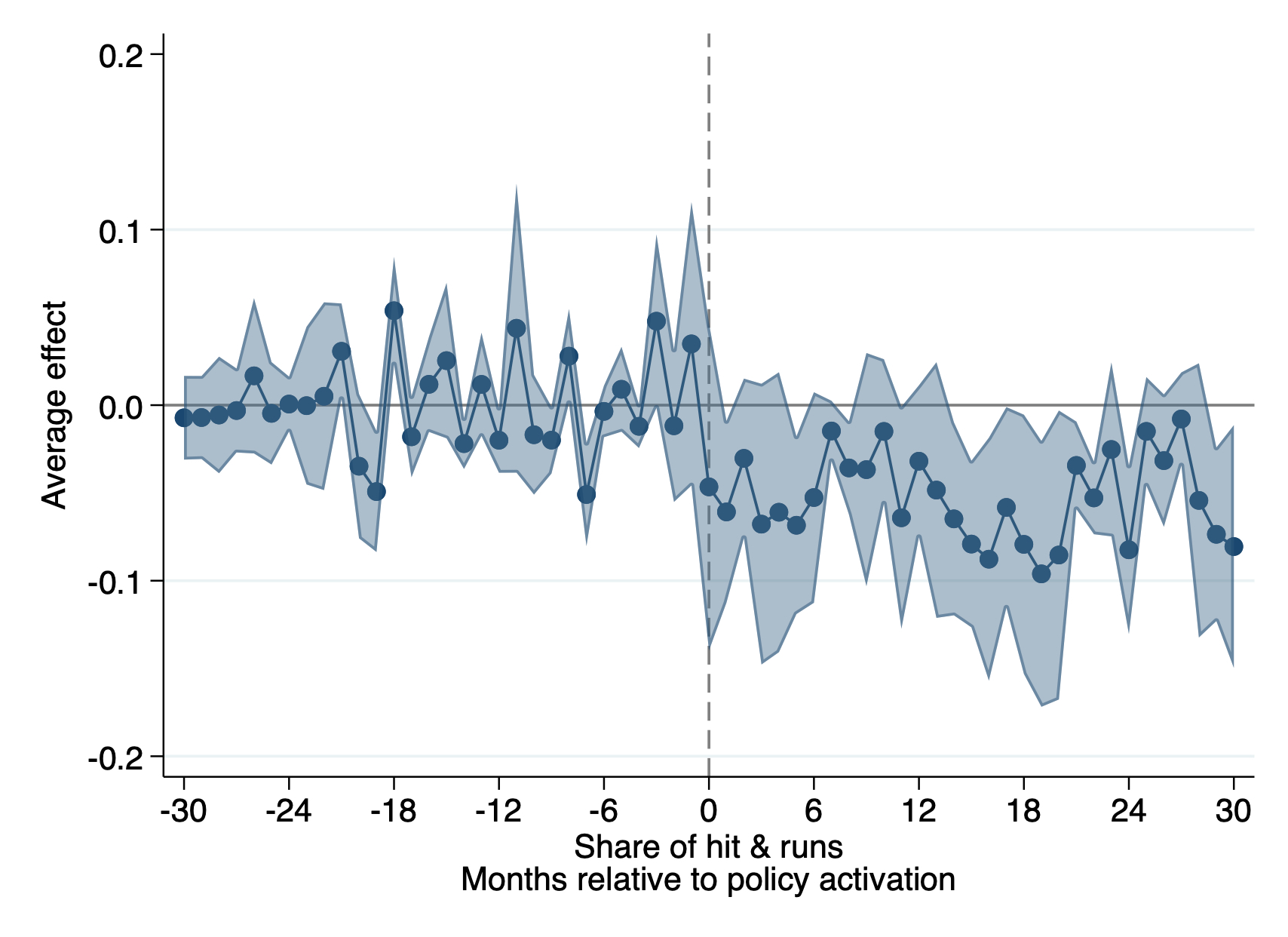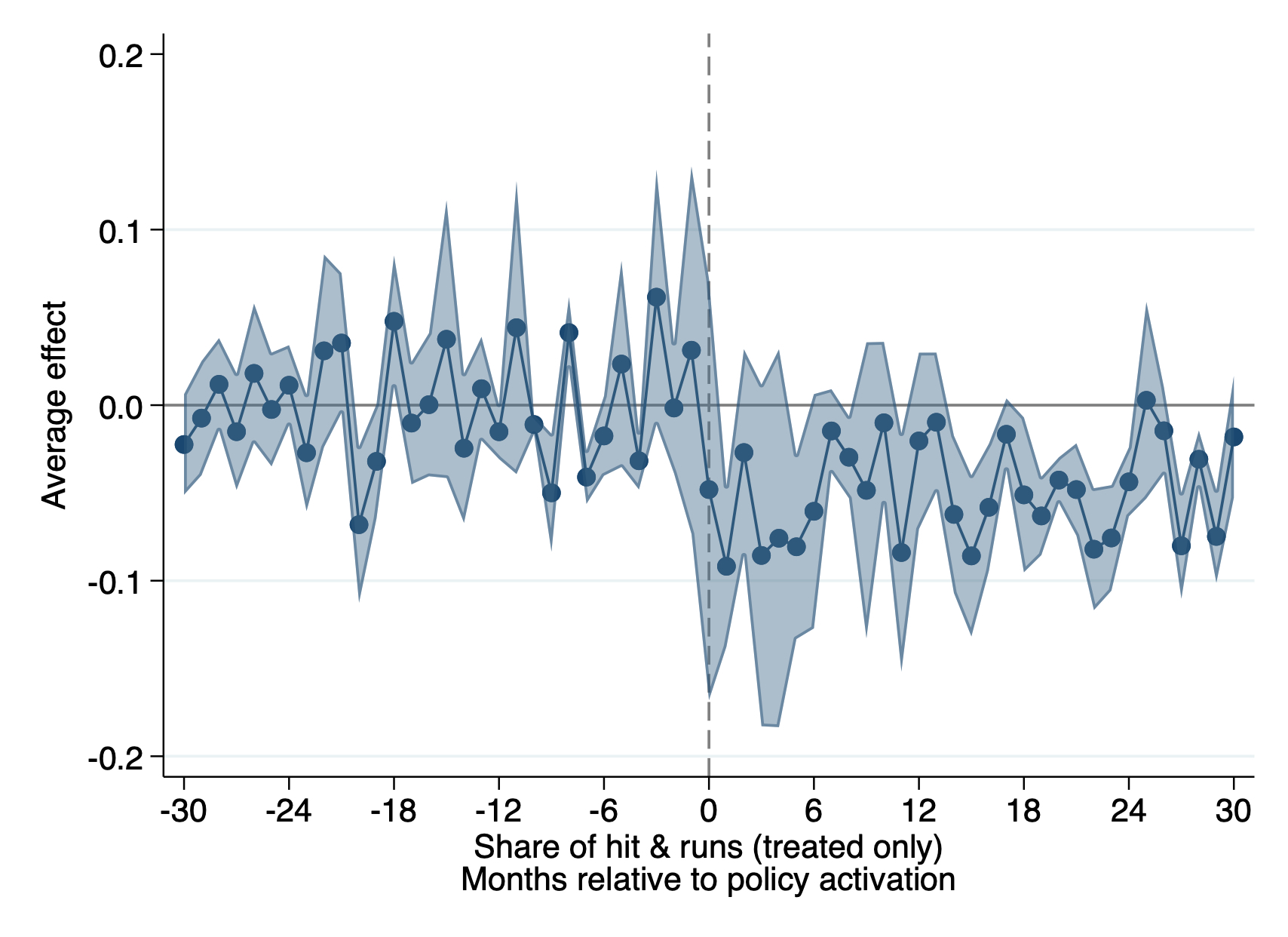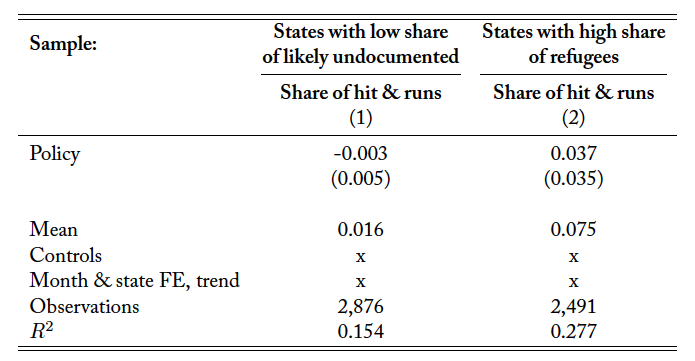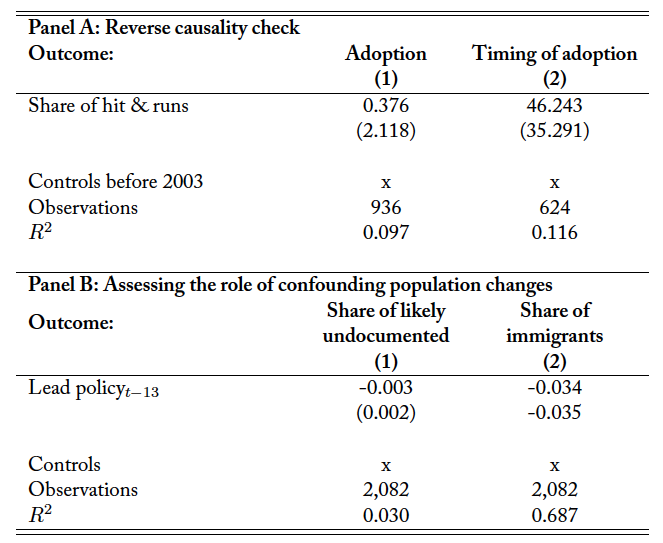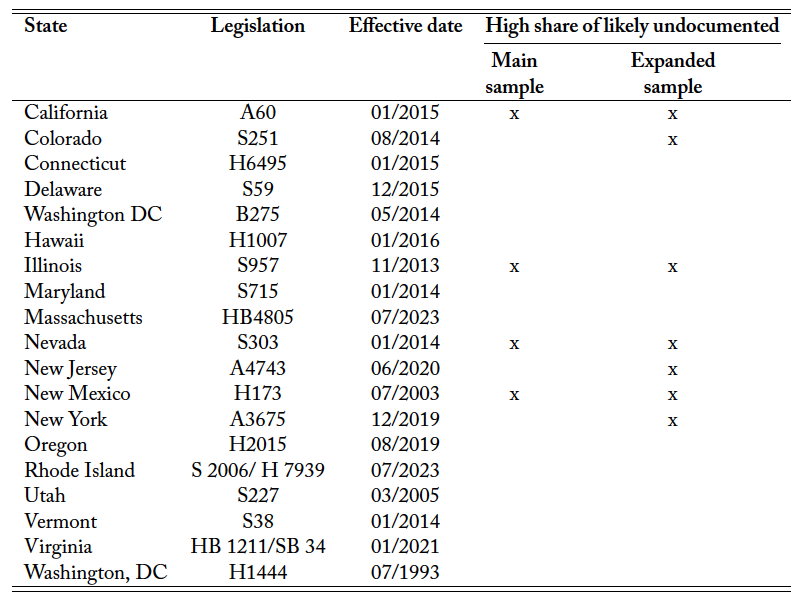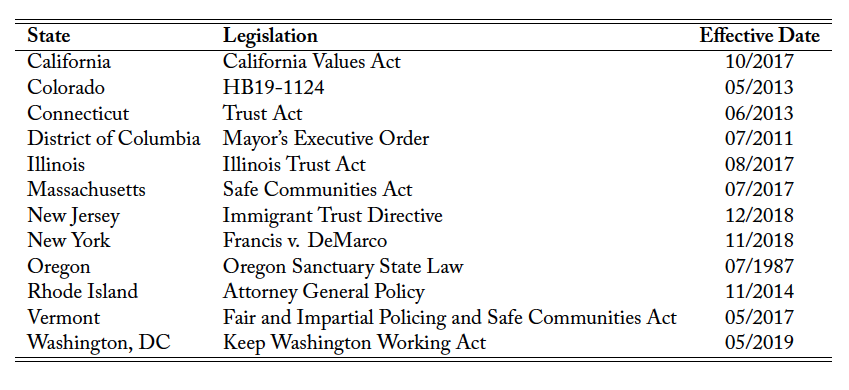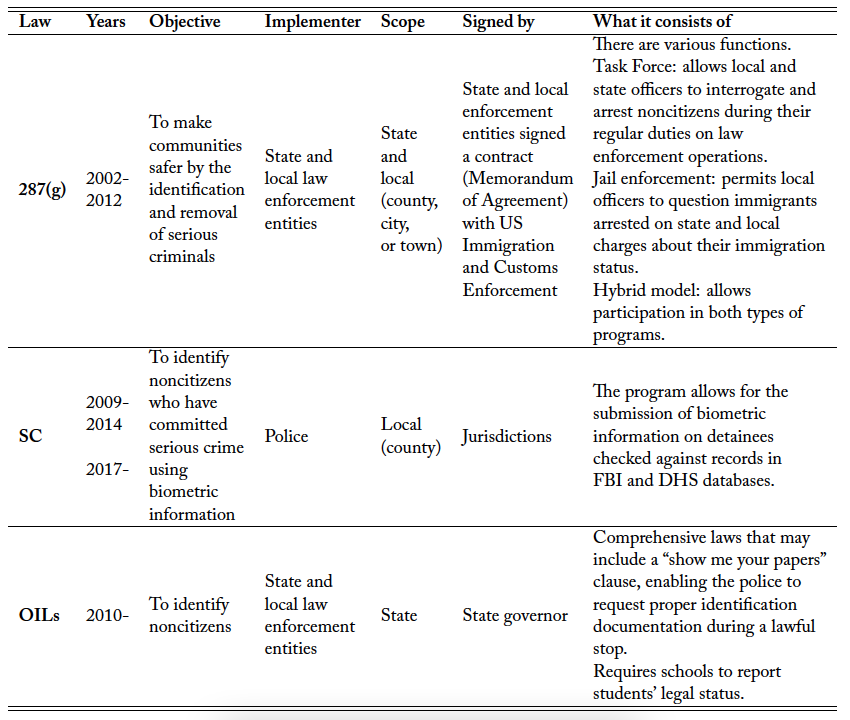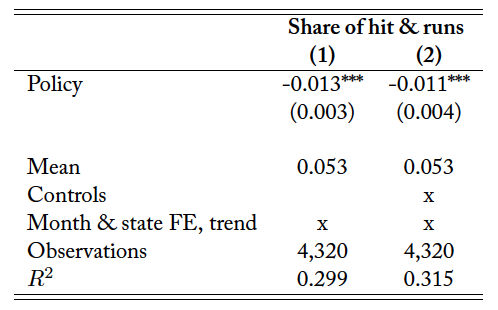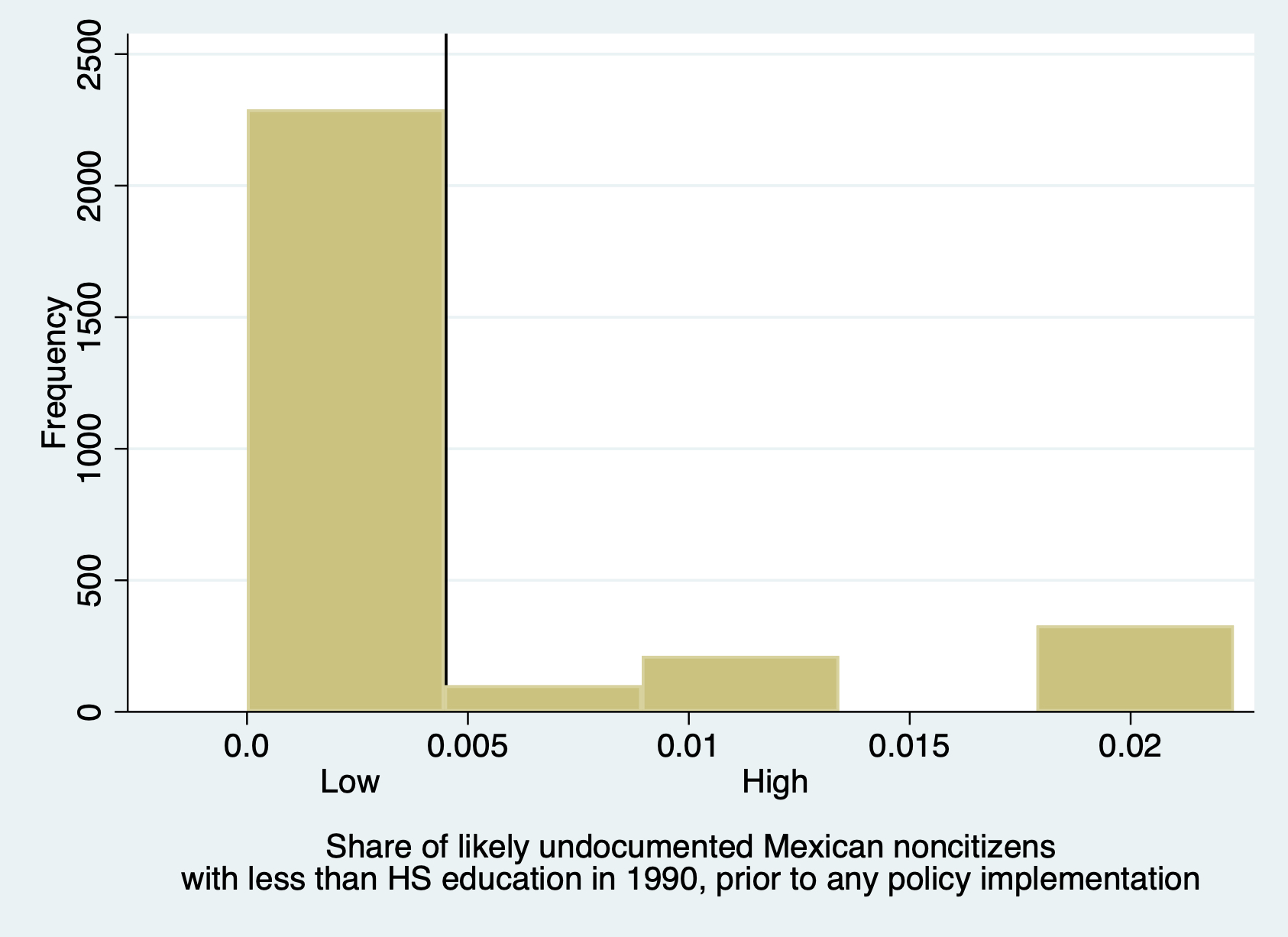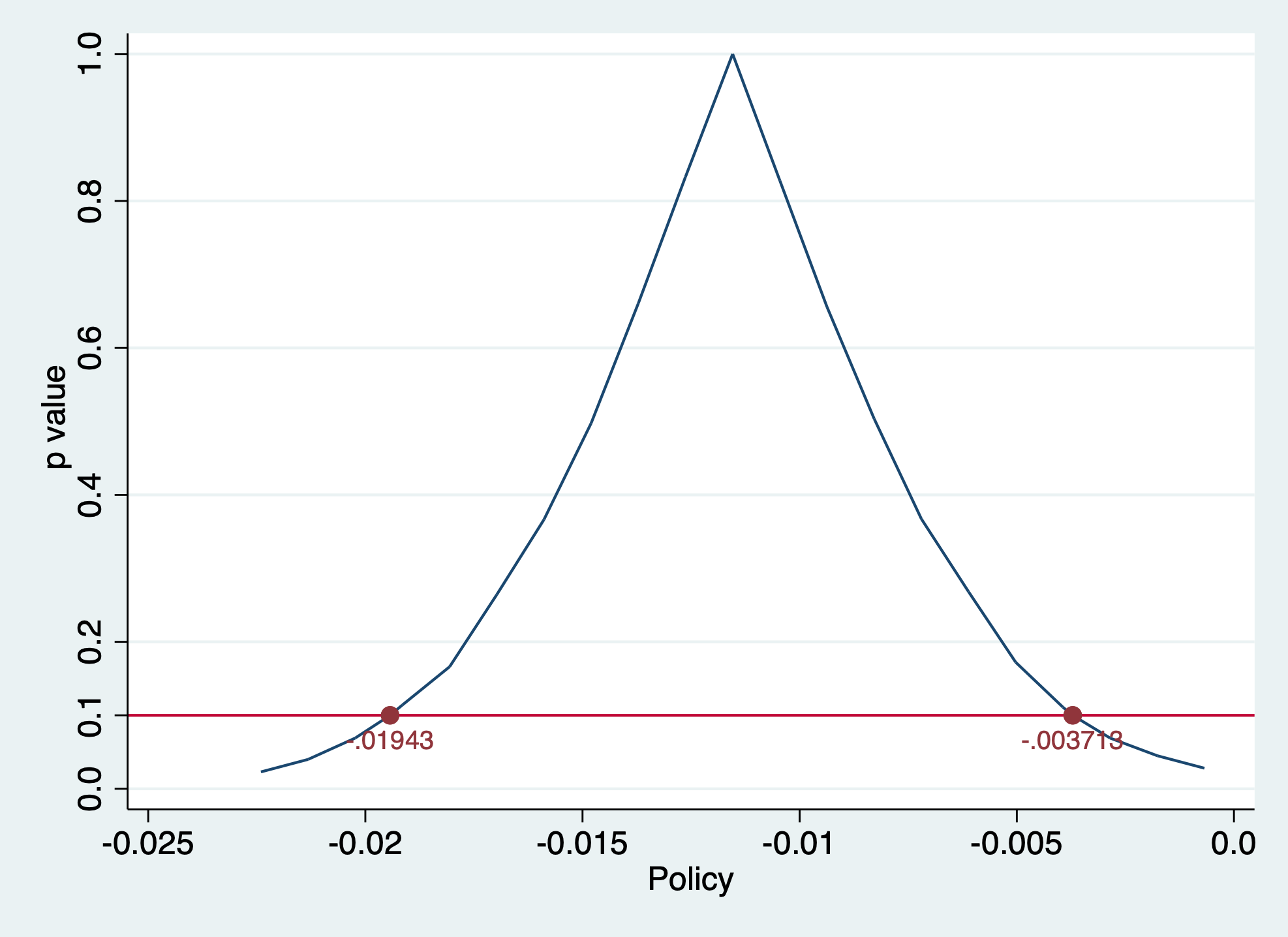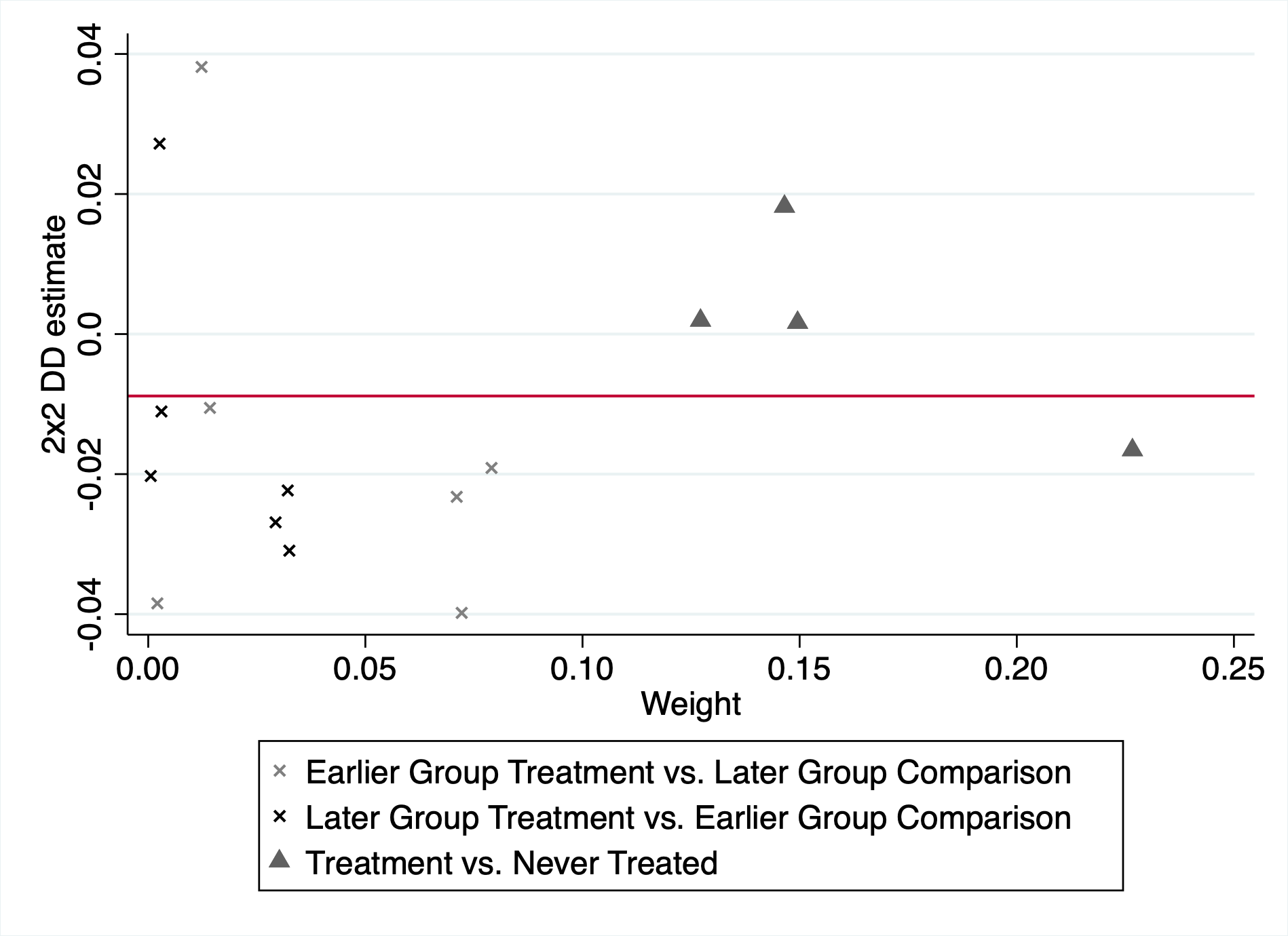Police Chief Joseph Sinagra, Saugerties, NY:
“People aren’t running from the police now. They’re stopping. And we haven’t had a chase around here, to be honest with you, which is really good. It’s community safety… My officers now are spending more time on the street. They’re spending less time detaining individuals.”
In the same interview, journalist Chris Burrell notes, “Statewide, police in New York used to arrest about 57,000 people a year for unlicensed driving. Two years after lawmakers passed the Green Light law, arrests plummeted to about 30,000.”*
*NPR, All Things Considered: Massachusetts could allow undocumented people to get driver’s licenses, October 26, 2022, by Chris Burrell
Introduction
The extension of driving privileges to undocumented migrants remains the subject of heated public debate. Proponents argue that public roads are safer when everyone using them has passed a driving test and is insured. In addition, the expansion of driving privileges may increase trust and cooperation with the police in immigrant communities. Opponents argue that extending driving privileges to undocumented immigrants creates a public safety threat as driver’s licenses can be used fraudulently as identity documents for employment, banking, and voting purposes. Furthermore, the granting of such privileges undermines the rule of law. We revisit this debate focusing on one potential externality of granting driving privileges to undocumented migrants -namely increased public safety by lowering their propensity to flee a serious car accident scene.
Having a valid driver’s license might not alter undocumented migrants’ likelihood of being involved in a car accident unless acquiring a license affects how much they drive or the quality of their driving. Yet, being licensed might lower undocumented migrants’ propensity to flee a serious car accident scene. Irrespective of who is at fault, unlicensed undocumented migrants might fear encountering law enforcement since lacking a driver’s license and insurance may result in a criminal conviction and deportation. If undocumented migrants are authorized to drive, they might be more likely to be insured and more inclined to stay in the accident scene, which is particularly relevant in the case of serious accidents as it can save lives when they seek the assistance of first responders. We investigate the validity of that hypothesis, focusing on the most extreme cases of hit and run accidents, namely fatal accidents.
Using data on the universe of fatal car accidents in the United States, we examine changes in the share of fatal accidents that are hit and runs, as well as changes in the number of fatal hit and run accidents per 100,000 people (i.e., its numerator) and the number of fatal accidents per 100,000 people (i.e., its denominator),1 following the extension of driving privileges to undocumented immigrants. We find that issuing undocumented migrants driver’s licenses does not significantly alter the rate of fatalities; however, it lowers the share of hit and run fatalities anywhere between 20 percent and more than 50 percent, depending on the estimation methodology employed. The findings are not the byproduct of reverse causality, nor are they driven by confounding population changes. As such, the results suggest that extending driving privileges to undocumented migrants reduces the share of fatal accidents in which drivers flee the scene. Notably, the policy’s impact is not driven by overall improvements in traffic safety, as the number of fatalities per 100,000 does not significantly change. Rather, it is the reduction in the number of fatal hit and runs that lowers the share of fatal accidents in which some involved driver(s) flee the scene.
Our findings contribute to the literature on immigration policy examining the impacts of extending driving privileges to undocumented migrants. Prior studies have evaluated how issuing driver’s licenses to undocumented migrants affects their labor market outcomes (Barajas, 2021; Amuedo-Dorantes et al., 2020), car ownership (Cho, 2022), commute patterns (Amuedo-Dorantes et al., 2020), and car insurance (Churchill et al., 2021; Cáceres and Jameson, 2015). We focus, instead, on the impact of such a policy on public safety as captured by traffic fatalities. In a related study, Lueders et al. (2017) explore how granting driving privileges to undocumented migrants in California impacted the state’s traffic safety during the one-year period immediately following the policy adoption. The authors use the predicted number of issued permits and the number of hit and run accidents in each county to show that counties with a higher share of newly issued licenses exhibit a larger reduction in the share of hit and run accidents in the short run.
Using data on the entire universe of fatal car accidents in the United States, we revisit the public safety implications of issuing driver’s licenses to undocumented immigrants. Our analysis makes three important contributions. First, it provides an extended geographic scope, increasing the ability to extrapolate the findings beyond the state of California. Second, it covers a 30-year period, enabling the assessment of the short- and long-run impacts of the policy. Finally, it addresses important concerns regarding the potential for two-way fixed effects (TWFE) estimates to be significantly biased in the presence of a staggered policy treatment (Goodman-Bacon, 2021), as was the case with this policy.
Understanding the diverse impacts of extending driving privileges to undocumented immigrants is particularly relevant in the current policy context, as states continue to debate whether to adopt such measures. In 2022, Rhode Island became the most recent state to enact legislation extending driver’s licenses to undocumented immigrants (SB 2006/HB 7939). In addition, Massachusetts voters elected to uphold a bill allowing those without proof of lawful presence to obtain driver’s licenses (SB 4822/HB 4805), which had been vetoed earlier by the governor. Thus, an updated assessment of how these policies impact public safety beyond California in the short- and long-run is well warranted.
Institutional Background
The debate surrounding who should be eligible for a driver’s license is not new. Since automobiles became the preferred mode of transportation at the beginning of the 20th century, state legislatures enacted driver’s license laws to make sure drivers would learn traffic rules regardless of their immigration status. On the premise that having properly trained, tested, and identified drivers would promote public safety, insurance companies requested drivers to be licensed to ensure they would know traffic laws and to maximize the pool of those insured (Johnson, 2004). Similarly, some law enforcement agencies endorsed the idea of licensing as many drivers as possible to encourage cooperation with police and discourage hit and runs when people lacked a license.2 However, the meaning of driver’s licenses changed as they became the primary form of identification and effectively operated as national identification cards. Denying access to a driver’s license amounted to depriving individuals from the ability to rent an apartment, open a bank account, get a job, and identify oneself in federal, medical, and educational institutions. Because, in addition to their public safety implications, driver’s licenses became a necessity to function in American society, most states permitted undocumented migrants to obtain a driver’s license before the 1990s.
Nevertheless, states changed their practices following the September 11, 2001 terrorist attacks. Some of the non-citizen hijackers had boarded the planes using driver’s licenses. As a result, fears of identity fraud started to dominate the debate regarding the granting of driver’s licenses to undocumented immigrants (Silva, 2015), and many states tightened their rules for issuing driver’s licenses. In addition, four years later, Congress passed the REAL ID Act of 2005. This legislation effectively ended some of the discordance that predated 9/11, with some states requiring the presentation of birth certificates and social security cards for issuing driver’s licenses and others requiring no proof of legal residence at all. The 9/11 Commission suggested that states required future applicants of driver’s licenses to present some documentation of their legal status. As a result, by the early 2000s, most states restricted undocumented migrants’ access to driver’s licenses by requesting a social security number or proof of legal status to issue a driving permit (Pew, 2016).
States’ practices started to shift, once more, around 2012, coinciding with the intensification of interior immigration enforcement impacting entire mixed-status households. Concerns that undocumented migrants would still drive when lacking a license,3 evade renewing expired licenses, and fail to integrate into society4 led to an increased support for granting undocumented migrants access to driver’s licenses or, more accurately, permits.5 While the rationale for enacting these policies varied across states, it often included potential economic gains (more people able to drive to work), improved public safety (more people passing driver’s education and tests and being required to purchase car insurance), and the hopeful containment of car insurance premiums (Gonzalez and Margulies, 2017). In 2023, a total of 19 states grant some type of driving privilege to undocumented migrants (see Appendix table A.1).
Related Literature
Several authors have examined the implications of expanding driving privileges to undocumented migrants. One of the earliest studies is by Cáceres and Jameson (2015), who underscore some of the public safety benefits of issuing driver’s licenses to undocumented immigrants described earlier. Specifically, the authors note that lack of proper training, testing, and car insurance can result in more accidents and higher insurance costs.6 Follow-up studies have further noted how extending driving privileges to undocumented migrants does not increase the cost of insurance (Lueders and Mumper, 2022), does not raise car ownership (Cho, 2022), and keeps the number of drivers unchanged (Churchill et al., 2021), suggesting that some undocumented migrants were previously driving without authorization. Other analyses have also shown benefits pertaining to labor market gains. For instance, Barajas (2021) shows how granting driver’s licenses to undocumented immigrants increases their mobility and commuting times, and in consonance with this finding, Amuedo-Dorantes et al. (2020) and Cho (2022) document a simultaneous growth in job opportunities and hours worked.
In this study, we focus on yet another externality of granting driver’s licenses to undocumented migrants – namely, their ability to lower the likelihood of hit and runs in the case of serious accidents where lives are at risk. Unlicensed drivers are more likely to leave the scene of a fatal accident; 15 percent of these drivers do relative to 1.7 percent of licensed drivers (AAA Foundation for Traffic Safety, 2011) as driving without a license is a traffic offense that may result in a criminal conviction. Having multiple criminal offenses on record, including an illegal entry or reentry, can lead to deportation. Hence, undocumented migrants might be particularly fearful of a police encounter and in turn be more likely to flee an accident scene. In that spirit, Wong et al. (2019) show how undocumented migrants are over 40 percent less likely to report a crime to the police, even when they were the victims, if they believe law enforcement cooperates with U.S. Immigration and Customs Enforcement.
Of particular interest to us are the findings by Smith et al. (2021), who analyze the “traffic stop-to-deportation pipeline” in New York using U.S. Customs and Immigration Service data available through Syracuse University’s Transactional Records Access Clearinghouse system. They document that many deported migrants are apprehended during traffic stops despite having no criminal convictions. Focusing on a sample of drivers caught by the police after fleeing the accident scene, Solnick and Hemenway (1995) further note that many are younger male drivers who drive at night and fear severe punishment. Benson et al. (2021) confirm those traits and further show how the share lacking a driver’s license is larger in hit and runs (30 percent) than in other car accidents (10 percent). Finally, focusing on California, Lueders et al. (2017) show that, following the expansion of driving privileges to undocumented migrants, hit and runs drop the most in counties with more issued driving permits, suggesting these drivers are now less likely to flee an accident scene.
We contribute to this literature with an analysis of how granting driving privileges to undocumented migrants might impact traffic safety as captured by hit and run fatalities. Unlike prior studies, we rely on the universe of fatal car accidents in the entire United States over the past 30 years. The expanded temporal and geographic coverage enables us to gauge the short- and long-run impacts of this type of policy beyond California, improving the ability to extrapolate the findings. In addition, we pay attention to the staggered adoption of the policy, which could result in biased TWFE policy estimates. Overall, the findings allow us to assess if, as argued by proponents of expanding driving privileges to undocumented migrants, this type of policy improves traffic safety, as captured by the share of hit and run fatalities or generates a “call effect,” possibly raising the number of drivers and traffic hazards. While there is some evidence of undocumented migrants responding to heightened immigration enforcement by leaving the state (Bohn et al., 2014; Watson, 2013), their mobility response to the expansion, or lack of, driving privileges has not been assessed yet. We address that concern in our identification checks and, overall, evaluate which argument is supported by empirical evidence.
Data and Descriptive Statistics
Our primary source of data is the 1990–2019 Fatality Analysis Reporting System (FARS) published by the National Highway Traffic Safety Administration. It contains a census of fatal traffic accidents involving a motor vehicle and resulting in at least one death within 30 days of the crash. The data contain information on the location, the type of accident, and whether it involved a hit and run. If the driver remained at the scene, the state issuing the driver’s license is documented. In the case of hit and run fatalities, we know the location of the accident but lack data on the state issuing the driver’s license. Yet, to our knowledge, there is no evidence of out-of-state drivers being more likely involved in hit and runs than other drivers.7
The FARS data also include characteristics of the crash, such as the time of the day, day of the week/month, and weather conditions. Following the existing literature, we construct controls for weekend, nighttime, and low-visibility conditions. To address the procyclical nature of traffic accidents (Ruhm, 2015) and their association with alcohol consumption (Cotti and Tefft, 2011), we also gather and merge monthly unemployment data. Additionally, we account for whether the state is a sanctuary state based on its adoption of a Trust Act policy (see Appendix table A.2) as well as for the immigration climate in the state through an index constructed using the information on various immigration enforcement policies in place in the state (see Appendix table A.3). Our key regressor is a dummy variable indicative of when the state expanded driving privileges to undocumented migrants, as detailed in Appendix table A.1. For identification purposes, we exploit the temporal and geographic variation in the adoption of such state-level measures.
Because undocumented migrants are geographically clustered, we focus on states where the policy might have had a greater impact, namely states with a larger share of this demographic. To identify those states, we construct shares of likely undocumented migrants in each state. We use data from the 1990 Census to capture the undocumented population before the sample coverage period and before any state expanded driving privileges to avoid changes in the undocumented population as a result of the policy adoption. Given the composition of the likely unauthorized population in the United States in 1990, we consider citizenship, country of origin, and educational attainment as traits highly predictive of unauthorized immigration status (e.g., Mexican noncitizens with less than a high school education), in combination with the residual approach used by Borjas (2017).8 Our focus is on states with a share of 0.4 percent or higher, although the results prove robust to using alternative thresholds.9
Figure 1 presents the states with a high share of likely undocumented migrants in darker shades. These are the states where the policy might have an identifiable impact given its targeted population. The map further distinguishes (line pattern) states that expanded driving privileges to undocumented migrants (i.e., our treated group constituted by California, Illinois, Nevada, and New Mexico) versus states that did not (i.e., our control group, which includes Arizona and Texas).10
Figure 1. Overlap between Policy Adoption and a High Share of Likely Undocumented Migrants
Notes: States in dark gray are those with a high share of likely undocumented. States with lines are those that adopted policy-expanding driving privileges to undocumented migrants.
Table 1 provides some descriptive statistics for the sample of fatal accidents in states with a high share of likely undocumented migrants. The data are collapsed at the month and state level. Column 1 displays the means and standard deviations for all the states. In column 2, we do the same for those states in column 1 that never granted driver’s licenses to undocumented migrants, i.e., control states. In columns 3 and 4, we repeat the exercise for states that extended driving privileges to undocumented immigrants at some point, i.e., treated states, distinguishing before and after the policy enactment. We focus on the share of hit and runs among all fatal car accidents as well as its numerator (i.e., the number of fatal accidents that are hit and runs per 100,000) and its denominator (i.e., the number of fatal accidents per 100,000). In that manner, we can decipher if changes in the composition of fatal hit and runs stem from changes in the incidence of hit and runs among fatal accidents or, rather, from changes in fatal accidents per 100,000, which could be driven by other factors, such as changes in overall traffic safety or life-saving devices.
Table 1. Descriptive Statistics: Fatal Accidents in States with a High Share of Likely Undocumented Migrants 1990–2019
Data source: Fatality Analysis Reporting System, National Highway Traffic Safety Administration, 1990–2019.
Notes: Data are collapsed at the state, year, and month level. The sample is restricted to states with a high share of likely undocumented migrants (Arizona, California, Illinois, Nevada, New Mexico, Texas).
Overall, the descriptive statistics in Table 1 reveal greater traffic safety in treated states. The number of fatal accidents per 100,000 is smaller in treated states, for which they drop from 1.122 to 1.068 after granting undocumented immigrants access to driving licenses, than in control states (1.235). The number of fatal hit and runs is also lower in treated states, 0.066 and 0.056 before and after the expansion of driving privileges to undocumented migrants, relative to the average of 0.070 per 100,000 in control states. As a result, following the policy adoption, the share of hit and run fatalities declines in treated states (changing from 6.3 to 5.9 percent), even though it is higher than in control states (i.e., 5.7 percent) due to the lower rate of fatal accidents among the former group.
Other conditions surrounding fatal accidents are rather similar across treated and control states. Only 2.6 percent of the sample are in sanctuary states covered by a Trust Act—a percentage that rises to 14 percent during the post-policy period. Somewhat related is the level of interior immigration enforcement, which we proxy for using an index that combines information on various interior immigration enforcement initiatives.11 States that, at some point, extend driving privileges to undocumented migrants have a lower immigration enforcement index before the expansion (i.e., 0.106) even though it increased over time to 0.789—slightly more than in control states over the sample period (i.e., 0.677).
Methodology
We exploit the temporal and geographic variation in the enactment of state-level legislation enabling undocumented migrants to legally drive to assess its impact on traffic safety, as captured by the incidence of hit and runs during fatal accidents. Given the policy scope, we conduct the analysis at the state level. We are interested in understanding how the policy may have altered undocumented migrants’ propensity to flee the scene of a serious car accident relative to when they are unauthorized to drive. Therefore, we focus on changes in the share of fatalities that are hit and runs. By looking at the changes in the composition of fatal accidents, we abstract from factors altering the incidence of fatal car accidents, as would be the case with overall improvements in traffic safety.
Nevertheless, to ensure changes in the share are driven by changes in the incidence of hit and runs among fatalities, as opposed to by changes in the incidence of fatal accidents, we also conduct the analysis using the numerator and denominator of the share as dependent variable outcomes. In all instances, we start by estimating the following TWFE model:
(1)
where stands for the dependent variable in question, namely the share of hit and run fatalities, the number of hit and run fatalities per 100,000, and the number of fatalities per 100,000 in state
and (month, year)
. By focusing on shares, we account for changes in the number of drivers or accidents in a state. The vector
equals one after a state enacted legislation allowing undocumented migrants to obtain driver licenses and equals zero otherwise. Equation 1 also includes the vector
, which contains information on other state time-varying traits that could affect traffic safety, such as the incidence of low-visibility weather conditions, the share of accidents occurring at night or during the weekend, the unemployment rate, whether the state is a sanctuary state, and the enforcement climate in the state. State (
) and period (
) fixed effects account for time-invariant geographic and temporal traits that could affect traffic safety. Additionally, we include state-specific time trends to account for time-varying factors at the state level that impact traffic safety. Standard errors are clustered at the state level in all specifications.12
We are primarily interested in the coefficient , which identifies the impact of legislation granting undocumented migrants the ability to obtain a driver’s license on traffic safety by comparing changes before and after the adoption of such policies in treated versus control states. The validity of our estimate relies on multiple identification assumptions that we confirm through various checks. First, we address potential biases in our TWFE estimates resulting from the staggered expansion of driving privileges across states. To that end, we first conduct some diagnostic checks using the Goodman-Bacon decomposition (Goodman-Bacon, 2021). Second, we estimate the model using the methodology of Callaway and Sant’Anna (2021) and obtain similar results. In addition, we conduct an event study to assess if hit and runs at least trend in a parallel fashion in treated versus control states before the implementation of these policies by adopting states.
Following Sun and Abraham (2021), we also conduct the above-mentioned diagnostic and robust estimation for a restricted sample of treated states. As noted by these authors, when never-treated units are not comparable to treated units, the former should be excluded from the estimation. This is clearly our case, with states expanding driving privileges being, in various ways, fundamentally different from those that never do. For instance, adopting states are more likely to lean toward the Democratic Party, whereas never adopters are Republican states, e.g., Arizona and Texas. This political differences clearly shape state regulations.
Finally, we test the assumption of policy exogeneity. While no policy is ever random, we conduct a series of checks to assess if the expansion of driving privileges was the byproduct of reverse causality or unobserved heterogeneity. We start by showing that the share of fatal hit and run accidents prior to the expansion of driving privileges does not help predict the policy adoption nor the timing of the adoption, as one would expect under reverse causality. Next, we check if the expansion of driving privileges is meaningfully correlated to the share of immigrants or the share of likely undocumented migrants in the state—a correlation that would suggest internal migration is biasing our findings. In what follows, we discuss our findings.
The Impact of Driver’s Licenses to Undocumented Migrants on Fatal Hit and Run Accidents
Main Results and Identification Checks
Table 2 displays the TWFE estimates from estimating equation 1. In columns 1, 3, and 5, we only control for temporal and geographic fixed effects as well as state-specific time trends to address unobserved time-varying conditions at the state level that could affect traffic safety. Next, in columns 2, 4, and 6, we include additional controls for time-varying traffic conditions in the state, as would be the case with weather conditions at the time of the accident, as well as with the state’s unemployment rate, sanctuary status, and immigration enforcement climate.
Table 2. Driver’s Licenses for Undocumented Migrants and Fatal Accidents
Data source: Fatality Analysis Reporting System, National Highway Traffic Safety Administration, 1990–2019.
Notes: Data are collapsed at the state, year, and month level. The sample is restricted to states with a high share of likely undocumented migrants (Arizona, California, Illinois, Nevada, New Mexico, Texas). All models include a constant term as well as state time-varying controls specified in Table 1. *** p<0.01, ** p<0.05, * p<0.1.
We conduct the analysis for the share of hit and runs among all fatal accidents, as well as for its numerator and denominator, to confirm any policy impacts are not driven by changes in the incidence of fatalities per 100,000. As shown in columns 1 and 2 of Table 2, the share of fatal hit and run accidents drops by 1.2–1.4 percentage points (20–23 percent) following the expansion of driving privileges. This effect is not driven by changes in the rate of fatalities, which remained unaffected following the policy enactment. Rather, it is due to the policy lowering the incidence of fatal hit and runs by 0.023–0.024—equivalent to a 35 percent decrease relative to its mean. In sum, the policy altered the incidence of fatal hit and runs, an impact well captured by the share of fatal car accidents that are hit and runs.
Recent advances in the econometrics difference-in-differences literature have shown how the estimated coefficients from TWFE models cannot be interpreted as weighted averages of unit-level treatment effects when treatment occurs in a staggered fashion (e.g., Goodman-Bacon (2021)). TWFE with differential timing make what are referred to as “clean” comparisons between treated and not-yet treated units as well as “forbidden” comparisons between units where both have already been treated. The latter can lead to biases in the TWFE coefficients due to negative weighting problems. In our case, most states have never been treated, allowing for the above-mentioned clean comparisons to dominate in the computation of the TWFE estimates. Nevertheless, to confirm that is the case, we conduct a Goodman-Bacon decomposition diagnostic check to ensure the weights are nonnegative.
As shown in Table 3 (and Appendix figure A.4), our estimates are primarily driven by the “clean comparisons” between treated and never-treated units, and all weights are positive. The estimate in column 1 reveals a 0.9 percentage point (15 percent) reduction in the share of hit and runs—an effect similar to the TWFE estimate in column 2 of Table 2. In addition, comparisons of treated to never-treated units contribute the most to the estimated coefficient, with a weight of 65 percent. The next largest weight (25 percent) is the one assigned to early versus late treated comparisons. Because these comparisons involve units that are treated early and their status never changes thereafter, they can also be considered a “good comparison.” When using them as a control, the policy is estimated to lower the share of fatal hit and runs by 2.3 percentage points. The “bad comparisons” of late treated to early treated receive the smallest weight, i.e., 10 percent.
In column 2, we repeat the exercise restricting the sample to only treated states as suggested by Sun and Abraham (2021). The estimated policy impact is somewhat larger, namely a 2.4 percentage point drop in the share of hit and run fatalities. This is equivalent to a 40 percent reduction relative to the mean, most of it explained by comparisons of early treated to late treated units. Altogether, the results of the decomposition analysis alleviate the concern outlined in Goodman-Bacon (2021).
Table 3. Goodman-Bacon Decomposition
Data source: Fatality Analysis Reporting System, National Highway Traffic Safety Administration, 1990–2019.
Notes: Data are collapsed at the state, year, and month level. The sample is restricted to states with a high share of likely undocumented migrants (Arizona, California, Illinois, Nevada, New Mexico, Texas). *** p<0.01, ** p<0.05, * p<0.1
To assuage any remaining concerns regarding biases stemming from the heterogeneous nature of the treatment, we next use Callaway and Sant’Anna (2021)’s semiparametric difference-in-difference estimator to generate group-time average treatment effects and construct an event study. Table 4 presents the estimated average treatment effect on the treated (ATT) for states with a high share of likely undocumented migrants in column 1 and for only treated states in column 2. The policy is estimated to lower the share of fatal hit and runs by 3.4–3.5 percentage points—a 50 percent reduction. The estimate is not significant using the full sample but gains precision using the treated sample.
Table 4. Callaway Sant’Anna ATT & Event Study Estimates
Data source: Fatality Analysis Reporting System, National Highway Traffic Safety Administration, 1990–2019.
Notes: Data are collapsed at the state, year, and month level. The sample is restricted to states with a high share of likely undocumented migrants (Arizona, California, Illinois, Nevada, New Mexico, Texas). Treated-only states include California, Illinois, Nevada, New Mexico. *** p<0.01, ** p<0.05, * p<0.1
Figure 2 displays the estimated coefficients corresponding to the 30 months before and after the policy implementation. Despite some volatility, estimates for the years preceding the provision of driver’s licenses to undocumented migrants are generally indistinguishable from zero, strongly supporting the assumption of no differential pre-trends. However, we observe a progressive reduction in the share of fatal hit and run accidents immediately after the expansion of driver’s licenses to undocumented migrants. While less precisely estimated due to the inability to account for other time-varying controls included in the TWFE models, the ATT is still negative, i.e., –3.5 percentage points. Moreover, the estimated pre-period average is zero, while the post-period average is –5.3 percentage points, as shown in column 1 of Table 4.
Figure 2. Callaway and Sant’Anna Event Study
Data source: Fatality Analysis Reporting System, National Highway Traffic Safety Administration, 1990–2019.
Notes: Data are collapsed at the state, year, and month level. The sample is restricted to states with a high share of likely undocumented migrants (Arizona, California, Illinois, Nevada, New Mexico, Texas).
Following the recommendation of Sun and Abraham (2021), we experiment with excluding the never-treated states and reestimating the model using the not-yet-treated states as the comparison. Figure 3 presents the event study results using this alternative sample. The estimated policy impact remains nearly identical in magnitude to the one estimated using the full sample, but the coefficient is more precisely estimated. As shown in column 2 of Table 4, the pre-period effect is zero, whereas the post-period effect is equal to a 4.9 percentage point reduction.
Figure 3. Callaway and Sant’Anna Event Study: Treated Only
Data source: Fatality Analysis Reporting System, National Highway Traffic Safety Administration, 1990–2019.
Notes: Data are collapsed at the state, year, and month level. The sample is restricted to states with a high share of likely undocumented migrants that expanded driving privileges to undocumented migrants (California, Illinois, Nevada, New Mexico).
In sum, the coefficient estimates for the years preceding the extension of driving privileges to undocumented migrants are indistinguishable from zero regardless of the treated and control groups used, strongly supporting the assumption of no differential pre-trends in fatal hit and runs. In addition, we observe a clear reduction in the share of fatal hit and run accidents immediately after the provision of driver’s licenses to undocumented migrants—an impact that remains negative for several years after the policy adoption. As a result, the estimates in Tables 3 and 4 and in Figures 2 and 3 support the interpretation of those in Table 2 as causal, suggesting that the expansion of driving privileges to undocumented migrants increases traffic safety by lowering the share of hit and runs fatalities.
Placebo and Robustness Checks
We perform several checks aimed at assessing the reliability of our findings. First, we conduct two placebo checks. Instead of focusing on states with a high share of likely undocumented migrants, we experiment with using (1) states with the lowest share of likely undocumented migrants and (2) states with a high share of refugees, who are clearly legal.13 In both instances, we expect the policy to have no impact. As displayed in Table 5, we find no evidence of the policy having a differential impact on the share of fatal hit and run accidents, suggesting that the estimates in Table 2 are not likely spurious.
Table 5. Falsification Checks
Data source: Fatality Analysis Reporting System, National Highway Traffic Safety Administration, 1990–2019.
Notes: Data are collapsed at the state, year, and month level. The sample in column 1 is restricted to states with a low share of likely undocumented migrants (Kentucky, Maine, Montana, North Dakota, Ohio, South Dakota, Vermont, West Virginia), and the sample in column 2 is restricted to states with a high share of refugees (California, Washington, DC, Florida, Louisiana, Nevada, New Jersey, New York). All models include a constant term as well as the state time-varying controls specified in Table 1. *** p<0.01, ** p<0.05, * p<0.1
Next, in Panel A of Table 6, we check for reverse causality to determine if a higher rate of hit and run fatalities have led to the policy adoption. We restrict the sample to the period preceding 2003, i.e., before the expansion of driving privileges to undocumented migrants by most states, and assess if their share of hit and run fatalities is predictive of the state’s eventual policy adoption. As shown in column 1, we find no evidence of that being the case. Then, focusing on treated states (column 2), we explore if the share of hit and run fatalities in years prior is a good predictor of the policy’s adoption timing. Once more, we fail to find any significance evidence of that being the case.
Table 6. Reverse Causality and Confounding Population Checks
Data source: Fatality Analysis Reporting System, National Highway Traffic Safety Administration, 1990–2019.
Notes: Data are collapsed at the state, year, and month level. The sample is restricted to states with a high share of likely undocumented migrants (Arizona, California, Illinois, Nevada, New Mexico, Texas). The sample in Panel A is further restricted to the years 1990 to 2002. All models include a constant term as well as the state time-varying controls specified in Table 1. *** p<0.01, ** p<0.05, * p<0.1
To conclude, we address the possibility that some of the observed policy impacts may be driven by confounding changes. Of particular concern when dealing with migrant populations is their nonrandom location. Undocumented migrants may choose to reside in states that are more permissive and more likely to extend driving privileges to them. To assess if that is the case, we evaluate the degree to which the expansion of driving privileges to undocumented migrants is predictive of the state’s population composition, as captured by its share of undocumented migrants or by its share of immigrants. Since population figures are reported annually, we create a 13-month policy lead dummy. As shown in Panel B of Table 6, we find no evidence of states’ policy adoption being significantly correlated with the share of undocumented migrants (column 1) or the share of immigrants (column 2) in the state. In other words, states’ population composition in terms of the share of immigrants or their type is not significantly changing on account of the extension of driving privileges to undocumented immigrants. These findings suggest that migration in response to the policy, i.e., a “call effect”, as argued by some policy opponents, is not likely to be a primary driver of our findings.
Summary and Conclusions
Using data from the universe of fatal car accidents in the United States, we examine how extending driving privileges to undocumented migrants impacts the share of fatal hit and runs for fear of a police encounter. Focusing on states with a higher share of undocumented immigrants, i.e., states where the policy may have a significant impact, we find evidence that issuing driver’s licenses to undocumented immigrants lowers the share of fatal accidents classified as hit and run. This impact, which emerges following the policy adoption, is not observed in placebo checks and does not appear to be driven by reverse causality biases or confounding population changes. Specifically, the TWFE models reveal a policy impact that lowers the share of fatal hit and run accidents between 1.2–1.4 percentage points (20 percent), whereas the Callaway Sant’Anna estimates suggest an even larger reduction of 3.4–3.5 percentage points (50 percent). Importantly, the impacts are not driven by changes in the rate of fatal accidents per 100,000 but, rather, by reductions in the rate of fatal accidents classified as hit and run.
According to the AAA Foundation for Traffic Safety, nearly 740,000 hit and run accidents occur annually and approximately 2,000 (0.3 percent) are fatal (Benson et al., 2017). An accident is classified as fatal when there is a death within 30 days of the crash. If a driver involved in a serious accident is more likely to flee the scene when they are undocumented and unlicensed due to fear of deportation, the arrival of first responders may be delayed and more deaths may occur. While, based on our estimates, we can calculate a predicted reduction in hit and run fatalities, we are unable to compute how many deaths could have been prevented if drivers were to remain at the scene. Nevertheless, with the statistical value of life estimated by the U.S. Department of Transportation (2022) averaging $11.8 million, even saving one life would imply a significant social benefit.
Moreover, the estimated benefits from extending driving privileges to undocumented migrants might represent a lower bound if the policy also lowers the overall incidence of hit and runs. Further analyses examining the impact of granting driving privileges to undocumented immigrants on overall traffic safety are well warranted given the non-negligible numbers of undocumented immigrants and mixed-status households affected by driving restrictions and the continued adoption of this policy by other states.
Appendix
Table A.1. Access to Driver’s Licenses to Undocumented Migrants
Data sources: Data for the 1990–2012 period come from Cáceres and Jameson (2015), who surveyed state legislatures year by year. Data from the 2005 Congressional Research Service report for Congress Data for the 2012–2015 period come from the National Conference of States Legislatures (2023), which provides historical information on state-level-enacted legislation offering driving privileges to unauthorized immigrants up to 2021. Data on data on additional changes in states’ driver’s license requirements for the years 2016 and 2017 come from the National Immigration Law Center (2021). These data are checked against the 2015 Pew report and its 2016 update (Pew, 2016).
Table A.2. Sanctuary State Policies: Trust Acts
Table A.3. Interior Immigration Enforcement Policies (Police-Based Measures) Used to Construct the Immigration Enforcement Index
Table A.4. Driver’s Licenses for Undocumented Migrants and Fatal Accidents in States with a High Share (Expanded) of Likely Undocumented Migrants 1990–2019
Data source: Fatality Analysis Reporting System, National Highway Traffic Safety Administration, 1990–2019.
Notes: Data are collapsed at the state, year, and month level. The sample is restricted to states with a high share of likely undocumented migrants (Arizona, California, Colorado, Florida, Georgia, Illinois, Nevada, New Mexico, New Jersey, New York, North Carolina, Texas). All models include a constant term as well as state time-varying controls specified in Table 1. *** p<0.01, ** p<0.05, * p<0.1
Figure A.1. States’ Share of Likely Undocumented Migrants
Data source: 1990 US Census.
Notes: The figure shows states’ share of Mexican noncitizens with less than a high school education, further restricted by excluding those who are likely documented using the residual method of Borjas (2017).
Figure A.2. Overlap between Policy Adoption and a High Share of Likely Undocumented Migrants (Expanded)
Notes: States in dark gray are those with a high share of likely undocumented. States with lines are those that adopted policy-expanding driving privileges to undocumented migrants.
Figure A.3. Wild Bootstrap Test: Share of Hit and Runs, Cluster (State)
Boottest with wild bootstrap cluster(state) for Policy coefficient from Column 2, Table 2.
Figure A.4. Goodman-Bacon Decomposition
Data source: Fatality Analysis Reporting System, National Highway Traffic Safety Administration, 1990–2019.
Notes: Data are collapsed at the state, year, and month level. The sample is restricted to states with a high share of likely undocumented migrants (Arizona, California, Illinois, Nevada, New Mexico, Texas). The y-axis reports the TWFE estimate for one of the groups based on treatment timing. The x-axis reports the weight in the overall difference-in-differences estimate based on treatment timing.
References
AAA Foundation for Traffic Safety (2011, November). Unlicensed to Kill. Technical report.
Allen, R. and J. Wang (2020, July). Immigrant Legal Status and Commute Mode Choice for Hispanics in the United States. Journal of the American Planning Association 86 (3), 284–296.
Amuedo-Dorantes, C., E. Arenas-Arroyo, and A. Sevilla (2020, April). Labor Market Impacts of States Issuing of Driver’s Licenses to Undocumented Immigrants. Labour Economics 63, 101805.
Barajas, J. M. (2021, May). The Effects of Driver Licensing Laws on Immigrant Travel. Transport Policy 105, 22–34.
Benson, A., L. Arnold, B. Tefft, and W. Horrey (2017). Hit-and-Run Crashes: Prevalence, Contributing Factors and Countermeasures. Technical report, AAA Foundation for Traffic Safety.
Benson, A. J., B. C. Tefft, L. S. Arnold, and W. J. Horrey (2021, December). Fatal Hit-and-Run Crashes: Factors Associated with Leaving the Scene. Journal of Safety Research 79, 76–82.
Bernstein, H., D. Gonzalez, M. Karpman, and S. Zuckerman (2019, July). Adults in Immigrant Families Report Avoiding Routine Activities Because of Immigration Concerns. Technical report. Urban Institute.
Bohn, S., M. Lofstrom, and S. Raphael (2014, May). Did the 2007 Legal Arizona Workers Act Reduce the State’s Unauthorized Immigrant Population? The Review of Economics and Statistics 96 (2), 258–269.
Borjas, G. J. (2017, June). The Labor Supply of Undocumented Immigrants. Labour Economics 46, 1–13.
Callaway, B. and P. H. C. Sant’Anna (2021, December). Difference-in-Differences with Multiple Time Periods. Journal of Econometrics 225 (2), 200–230.
Cho, H. (2022, June). Driver’s License Reforms and Job Accessibility among Undocumented Immigrants. Labour Economics 76, 102174.
Churchill, B. F., T. Mackay, and B. Y. Tan (2021, January). Unauthorized Immigrants’ Access to Driver’s Licenses and Auto Insurance Coverage. Contemporary Economic Policy 39 (1), 107–125.
Cotti, C. and N. Tefft (2011, August). Decomposing the Relationship between Macroeconomic Conditions and Fatal Car Crashes during the Great Recession: Alcohol- and Non-Alcohol-Related Accidents. The B.E. Journal of Economic Analysis & Policy 11 (1).
Cáceres, M. and K. P. Jameson (2015). The Effects on Insurance Costs of Restricting Undocumented Immigrants’ Access to Driver Licenses. Southern Economic Journal 81 (4), 907–927.
Gonzalez, D. and P. Margulies (2017). A Legal and Policy Analysis of Driver’s Licenses for Undocumented Rhode Islanders. Roger Williams University School of Law.
Goodman-Bacon, A. (2021, December). Difference-in-Differences with Variation in Treatment Timing. Journal of Econometrics 225 (2), 254–277.
Harb, R. C., E. Radwan, X. Yan, M. Abdel-Aty, and A. Pande (2008). Environmental, Driver and Vehicle Risk Analysis for Freeway Work Zone Crashes. ITE Journal 78 (1), 26.
Johnson, K. R. (2004). Driver’s Licenses and Undocumented Immigrants: The Future of Civil Rights Law. Nevada Law Journal 5, 213.
Keeton, W. R. and E. Kwerel (1984). Externalities in Automobile Insurance and the Underinsured Driver Problem. The Journal of Law and Economics 27 (1), 149–179.
Lueders, H., J. Hainmueller, and D. Lawrence (2017). Providing Driver’s Licenses to Unauthorized Immigrants in California Improves Traffic Safety. Proceedings of the National Academy of Sciences 114 (16), 4111–4116.
Lueders, H. and M. Mumper (2022, May). Driving While Unauthorized: Auto Insurance Remains Unchanged When Providing Driver Licenses to Unauthorized Immigrants California. Journal of Risk and Insurance.
MacKinnon, J. G., M. Ørregaard Nielsen, and M. D. Webb (2023). Cluster-Robust Inference: A Guide to Empirical Practice. Journal of Econometrics 232 (2), 272–299.
National Conference of States Legislatures (2023). States Offering Driver’s Licenses to Immigrants. https://www.ncsl.org/immigration/states-offering-drivers-licenses-to-immigrants.
National Immigration Law Center (2021). State Laws Providing Access to Driver’s Licenses or Cards, Regardless of Immigration Status. https://www.nilc.org/wp-content/uploads/2015/11/drivers-license-access-table.pdf.
Pew (2016). Driver’s Licenses for Unauthorized Immigrants: 2016 Highlights. Technical report. Pew Charitable Trusts. https://www.pewtrusts.org/en/research-and-analysis/articles/2016/11/22/drivers-licenses-for-unauthorized-immigrants-2016-highlights.
Ruhm, C. J. (2015, July). Recessions, Healthy No More? Journal of Health Economics 42, 17–28.
Silva, A. (2015). Undocumented Immigrants, Driver’s Licenses, and State Policy Development: A Comparative Analysis of Oregon and California. Research and policy brief. UCLA Institute for Research on Labor and Employment.
Smith, R. C., A. B. Rayas, D. Flores, A. Cabrera, G. Y. Barbosa, K. Weinstein, M. Xique, M. Bialeck, and E. Torres (2021, June). Disrupting the Traffic Stop–to-Deportation Pipeline: The New York State Greenlight Law’s Intent and Implementation. Journal on Migration and Human Security 9 (2), 94–110.
Solnick, S. J. and D. Hemenway (1995, October). The Hit-and-Run in Fatal Pedestrian Accidents: Victims, Circumstances and Drivers. Accident Analysis & Prevention 27 (5), 643–649.
Sun, L. and S. Abraham (2021, December). Estimating Dynamic Treatment Effects in Event Studies with Heterogeneous Treatment Effects. Journal of Econometrics 225 (2), 175–199.
U.S. Department of Homeland Security (2000). U.S. Immigration and Naturalization Service, Office of Policy and Planning and U.S. Immigration and Naturalization Service. Estimates of the Unauthorized Immigrant Population Residing in the United States: 1990 to 2000. https://www.dhs.gov/xlibrary/assets/statistics/publications/Ill_Report_1211.pdf.
U.S. Department of Transportation (2022). Departmental Guidance on Valuation of a Statistical Life in Economic Analysis. https://www.transportation.gov/office-policy/transportation-policy/revised-departmental-guidance-on-valuation-of-a-statistical-life-in-economic-analysis.
Watson, T. (2013, November). Enforcement and Immigrant Location Choice. Technical report, National Bureau of Economic Research.
Wong, T. K., K. Shklyan, A. Isorena, and S. Peng (2019). The Impact of Interior Immigration Enforcement on the Day-to-Day Behaviors of Undocumented Immigrants. Technical report, UC San Diego.



